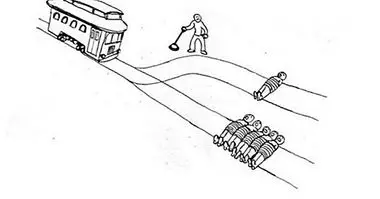Afantasía: the inability to visualize mental images
In 2016, a phenomenon that had gone virtually unnoticed until then began to be popular, with the exception of a pioneering study carried out by the famous Francis Galton at the end of the 19th century. Is about the inability to visualize mental images , which has been baptized with the name "afantasía".
In this article we will describe what exactly is the afantasía and what has been its historical development . For this we will focus on the contributions of Galton and Adam Zeman, as well as in the case of Blake Ross, who contributed greatly to raising awareness about the afantasy thanks to the intervention of social networks.
- Related article: "Cognition: definition, main processes and operation"
What is afantasy?
In the year 1880 Sir Francis Galton (1822-1911), pioneer of the use of statistics in psychology and of eugenic ideas, published the results of a psychometric study on the individual differences in the capacity to generate mental images. Galton found a great variability in this aptitude , including some cases in which he was absent.
During the twentieth century the research around this phenomenon was very scarce, although there are some references under Anglo-Saxon terms that can be translated as "defectual revisualization" or "visual irreminiscence". The studies of Adam Zeman's team (2010, 2015) and individuals like Blake Ross have popularized it with the name of "afantasía".
The limited data currently available suggest that between 2.1% and 2.7% of the general population is incapable of generating mental images, and therefore can be considered cases of afantasy (Faw, 2009). It also seems that the alteration could be more frequent in males (Zeman et al., 2015), although it is not yet possible to affirm it with certainty.
It is believed that the afantasía can be neurologically associated with synaesthesia and congenital prosopagnosia , which consists of a marked difficulty to recognize people by their face. The people with synesthesia obtain very high scores in the visualization tests, and the opposite happens with the cases of prosopagnosia.
- Related article: "Prosopagnosia, the inability to recognize human faces"
Contributions of Adam Zeman's team
The term "afantasía" was coined by a team of the University of Exeter, in the United Kingdom, led by Adam Zeman (2010). These authors published an article on the case of MX, a man who referred a loss of ability to visualize as a result of a coronary angioplasty . After this milestone the afantasía began to popularize.
Zeman and colleagues further increased awareness of afantasy with their second text on this (2015). The Exeter team relied on the contributions through questionnaires from 21 people who had contacted them after reading the previous article and identifying with the description of this peculiar "imaginative blindness".
The study by Zeman et al. revealed that there are different degrees and forms of presentation of this phenomenon ; thus, some people are unable to produce visual images voluntarily but they can experience them spontaneously, both in wakefulness and during sleep. On the other hand, in other cases these capacities are not even conserved.
The interference of the afantasy in the life of those who experience it seems in general quite limited, although a significant proportion of the participants referred Problems in autobiographical memory associated with this deficit , which on the other hand tended to compensate through the verbal format or what Zeman et al. they call "subvisual models".
- Maybe you're interested: "Synesthesia, people with the ability to see sounds and taste colors"
The case of Blake Ross
In April 2016, software engineer Blake Ross, co-creator of the web browser Mozilla Firefox and ex-product manager of Facebook, published a text on this social network in which he recounted his experiences with afantasy. It was an article in the New York Times that analyzed the case of MX (Zeman et al., 2010) that inspired him to share his story.
Ross stated that he did not know that he experienced this phenomenon until he read about its existence. Until then, he said, he believed that concepts such as counting sheep to favor the consolidation of sleep seemed like metaphors. He was not able to visualize the face of his deceased father, and he believed that nobody could really generate clear mental images .
Of course, Ross's text went viral and led many more people to the same revelation as him. Since then we have witnessed a rapid and remarkable increase in awareness of this curious imaginative deficit; in consecuense, It is expected that scientific knowledge will also increase in the coming years about afantasy.
Bibliographic references:
- Faw, B. (2009). Conflicting intuitions may be based on differing abilities - evidence from mental imaging research. Journal of Consciousness Studies, 16: 45-68.
- Galton, F. (1880). Statistics of mental imagery. Mind. Oxford Journals, os-V (19): 301-318.
- Zeman, A. Z. J .; Della Sala, S .; Torrens, L. A. A .; Gountouna, V. E .; McGonigle, D. J. & Logie, R. H. (2010). Loss of imagery phenomenology with intact visuo-spatial task performance: A case of 'blind imagination'. Neuropsychology, 48 (1): 145-155.
- Zeman, A. Z. J .; Dewar, M. & Della Sala, S. (2015). Lives without imagery - Congenital aphantasia. Cortex, 73: 378-380



















